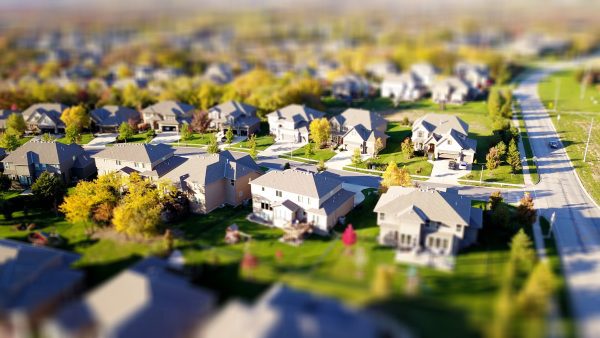Changing priorities: How the neighborhood choices of out-of-town movers impacts locals

By Asha Ellison
What happens to the community needs of an existing population when out-of-town movers relocate to their city? Do they dry up like raisins in the sun?
Not exactly, but the resources existing residents need to thrive, and the amenities they desire, could be reprioritized if they aren’t equally shared – or aligned – with those of newcomers.
A recent study conducted by Elizabeth Delmelle, Ph.D., director of the Master of Urban Spatial Analytics at the University of Pennsylvania (formerly at UNC Charlotte), Isabelle Nilsson, Ph.D., director of the Ph.D. program in geography at UNC Charlotte, and Providence Adu, a doctoral candidate at UNC Charlotte and Graduate Research Assistant at the Institute, examined the housing and neighborhood choices made by out-of-town movers (those who relocated from more than 200 miles away). They found that, in Charlotte and other fast-growing cities during the COVID-19 pandemic, the neighborhood housing preferences of area newcomers, and the unequal demand for resources and amenities in the areas where they settled, may have adverse effects on community needs.
“We wanted to dig into this phenomenon a bit more, and question whether these newcomers to the city made housing and neighborhood choices differently from existing residents,” said Delmelle. “We found that they do.”
But growth is good for everyone. Right?
The concern here is that the attention of local policymakers and change agents may shift to deprioritize the resources and amenities requested by existing residents in favor of those arising in high-growth neighborhoods. This could create tension between new and existing residents, as well as contribute to prevailing equity concerns in the city.
The case for Charlotte
Over the last five years, Charlotte has become a top destination for many Americans; in 2020, the broader Charlotte metropolitan area was ranked the seventh fastest-growing metro in the United State, and, as the largest city in North Carolina, it’s also the second largest banking center behind New York. And, during the pandemic period of April 2020 through July 2021, Charlotte received an average of more than 50 residents per day. And with Penske Truck Rental ranking the Queen City among the top nine moving destinations, it’s clear: Charlotte is the place to be.
What happens when newcomers get here?
When out-of-town movers arrive in Charlotte, often from places such as New York, Atlanta, Georgia, Columbia, South Carolina, Washington, D.C. and Miami, Florida, they tend to bring with them more money to spend on housing, access to cars, which enables them to live away from neighborhoods more reliant on public transportation, and they disproportionately settle in communities with better schools.
“These neighborhoods are also majority white, higher-income, and have a highly educated population,” said Delmelle. The homes in the neighborhoods where out-of-town movers landed are larger, suburban-type dwellings with high-end [conveniences] like upgraded kitchens and exercise amenities.”
Neighborhoods that are pedestrian-friendly, bike-accessible, near public transit, as well as those needing property renovations were less favorable by the city’s newest residents.
What should policymakers pay attention to?
Growth in any region could be a promising thing if the needs of the new and existing populations can be met equally and fairly. The volume of newcomers to Charlotte comes with many implications. The researchers suggested that local officials would benefit from understanding that:
Obstacles to access exist
Although existing residents may have desired to move within the city to upgrade their living situation, out-of-town movers, who may come from higher-wage labor markets and have the ability to work remotely, seem to have more success finding homes.
Inequality could expand
Not only do out-of-town movers tend to have higher incomes and education levels, they move to neighborhoods where their financial ability to buy homes at higher prices drives supply and demand and contributes to rising property costs.
“We see here that, by clustering in the highest-opportunity neighborhoods, the potential for widening inequalities exists,” said Delmelle. “We can expect prices in these neighborhoods to rise the highest, leading to greater home equity for well-off homeowners or those fortunate to live in the community [before the neighborhood was in-demand], but it also prices out local residents who wish to move in.
Resistance to urban planning is a possibility
The study also shows a disconnect between the preferences of existing residents and city newcomers – especially where urban planning priorities are concerned. With a rapidly changing population, local government members will need to consider how current and future initiatives may not appeal or align with the priorities of existing residents. As such, elected officials may be challenged when trying to garner support for some smart growth and neighborhood-specific initiatives.
You can read more about the researchers’ work here and Delmelle and Nilsson’s Gambrell Faculty Fellows project here.